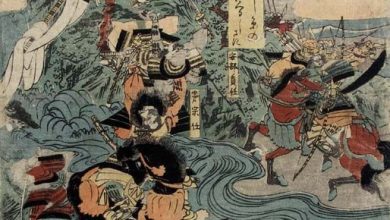The Battle of Kauhajoki (1808) – A Key Event in the Napoleonic Wars
The Battle of Kauhajoki, which occurred in 1808 during the Napoleonic Wars, stands as a significant military engagement in the Russo-Swedish War. It took place in the region of Kauhajoki, Finland, at a time when Europe was embroiled in the larger context of Napoleonic conflicts. This article delves into the events surrounding the battle, its key players, and the historical consequences of the fight.
Background: The Russo-Swedish War and the Napoleonic Wars
The Battle of Kauhajoki was part of the Russo-Swedish War, a conflict that was intertwined with the broader Napoleonic Wars. In the early 19th century, Napoleon Bonaparte’s empire was expanding rapidly across Europe, and his influence stretched even into the northern regions. The Swedish Empire, which had been a powerful force in Europe in the preceding centuries, found itself at odds with the Russian Empire, which had grown in prominence under Tsar Alexander I.
Finland, then part of Sweden, became a key battleground between these two powers. The war began in 1808 when Russia invaded Finland, aiming to secure its borders and further its ambitions in the region. The Swedish forces, although significantly weaker, resisted fiercely. The Battle of Kauhajoki was one of the many clashes during this tumultuous period.
The Battle of Kauhajoki: Details and Participants
The battle took place on the 19th of March, 1808, near the town of Kauhajoki in western Finland. The main participants were the Swedish and Russian forces, with Finnish soldiers also playing a pivotal role. The Swedish army, though outnumbered and outgunned, managed to achieve victory over the Russians. The Russian forces were part of a broader campaign led by Tsar Alexander I, seeking to assert control over Finland and bring it under Russian dominance.
The Swedish forces were fighting to protect their territory and maintain their hold on Finland, which had been part of the Swedish Empire for centuries. With Napoleon’s influence in Europe, Sweden’s political situation was precarious, but the battle at Kauhajoki proved to be a moment of resistance for the Swedish forces.
Outcome: Swedish Victory and Russian Defeat
The Battle of Kauhajoki ended with a decisive Swedish victory. Despite facing overwhelming odds, the Swedish forces, supported by Finnish soldiers, managed to inflict heavy losses on the Russian army. The battle was an important turning point in the Russo-Swedish War, as it boosted Swedish morale and delayed Russia’s plans to annex Finland.
However, the victory at Kauhajoki did not change the overall course of the war. Despite the Swedish success in the battle, Russia ultimately emerged victorious in the conflict, and Finland was ceded to Russia through the Treaty of Fredrikshamn later in 1809. This marked the end of Finland’s status as a part of Sweden and its incorporation into the Russian Empire as the Grand Duchy of Finland.
Legacy of the Battle
Although the Battle of Kauhajoki was a minor engagement in the larger scope of the Napoleonic Wars, it holds historical significance for both Sweden and Finland. It represents the determination of the Swedish army to resist Russian encroachment on its territory. For Finland, it was a precursor to the eventual shift in sovereignty that would occur after the conclusion of the Russo-Swedish War.
The battle is also an important symbol of the complex and often shifting alliances and conflicts during the Napoleonic Wars, where various European powers vied for dominance. The outcome at Kauhajoki, while important for Sweden at the time, did not alter the broader geopolitical realities of the period.
Conclusion
The Battle of Kauhajoki remains a notable event in the history of Finland, Sweden, and Russia. Despite the Swedish victory, it did not ultimately change the fate of Finland, which was eventually absorbed into the Russian Empire. However, it serves as a reminder of the fierce resistance put up by smaller nations in the face of larger powers during the Napoleonic Wars. The legacy of Kauhajoki is remembered today in the context of both Swedish and Finnish military history.





